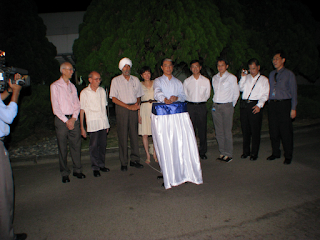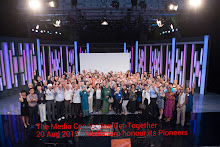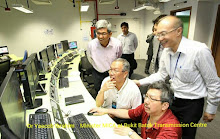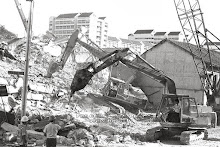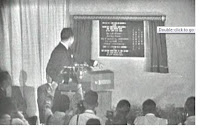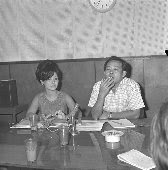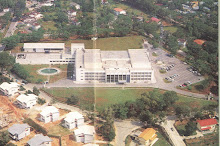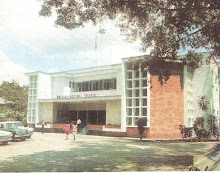Radio DaysChor Seng joined Radio Malaya’s (RM) Recorded Programme Division as a
Broadcasting Assistant Grade 4 in 1958 and worked his way up to become Singapore Broadcasting Corporation’s (SBC) Head of Location Operations for all film and video productions. He has witnessed Caldecott Hill’s dramatic transformation over his 40 years of service in broadcasting. As a Broadcast Assistant under British colonial administration, his studio duties included playing 78 rpm records in the Conty (small console. See attached picture) and providing
music & sound effects balancing for radio plays.
Separation from Malaya
Four years later, he was selected to pioneer the Camera Film Unit as an Assistant
Cameraman and by 1970 led the Camera & Sound Unit. In those early days of film and
air travel, he was part of the camera crew that accompanied then PM Lee Kuan Yew on
his Malaysian Mission to 17 countries in Africa in early 1964. In 1965, when Dr Toh Chin Chye and Mr S Rajaratnam re-visited Africa to explain Singapore’s eviction from Malaysia, Chor Seng was tasked to cover the assignment as well as Singapore’s subsequent application and admission to the United Nations.
Monochrome to ColourIn 1974, Chor Seng was sent to BBC/ITV/Visnews in London for training to prepare the
station’s switch over from monochrome to colour transmission. In 1977, he attended a 3-month Camera & Lighting Course together with Nicholas Seet at SFB in Berlin, West Germany. He retired in December 1998 after working for forty challenging and unforgettable years at Caldecott Hill. He had fond memories of his early years in Radio Malaya (Singapore), a large part of which involved the pioneering of TV broadcast in Singapore.
Broadcasting Milestones
Chor Seng remembers that ….”when TV Singapura was established 1963, filming was done on the 16mm film format. When the Chinese Drama Unit was created in 1982, the “Seletar Robbery” and the
“Army Series” that created a breakthrough for local dramas were shot on 16mm colour
film. We had to overcome formidable technical problems during those first film productions, for example high film cost, fully manual equipment, labourious post production, etc. By mid 80s, portable video ENG (Electronic News Gathering) cameras were acquired by the station and used by all the camera crews including drama productions. The video cameras were cost effective, produced better visuals, was easy to operate and were equipped with light and sound measurement features…..
I am happy that I was able to contribute to the success of Chinese Drama during its foundation years….”



